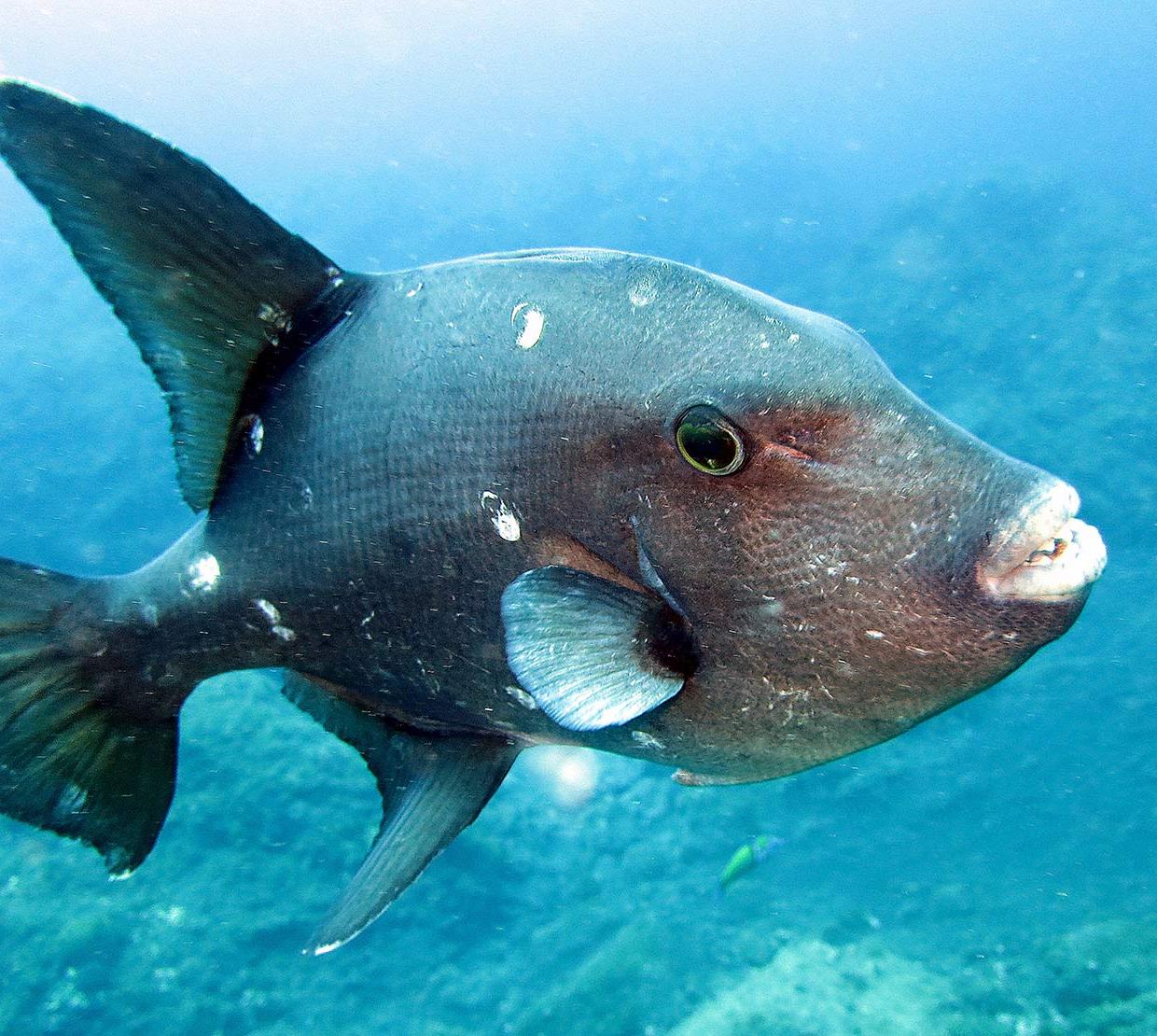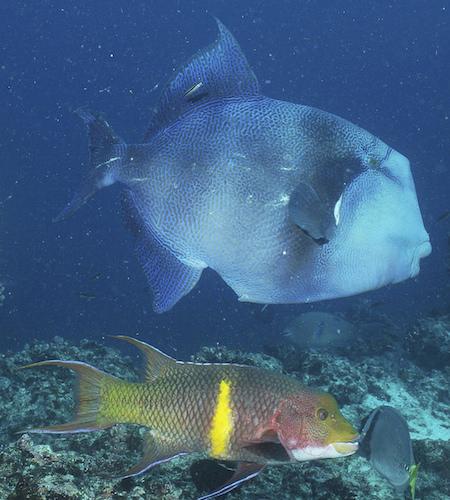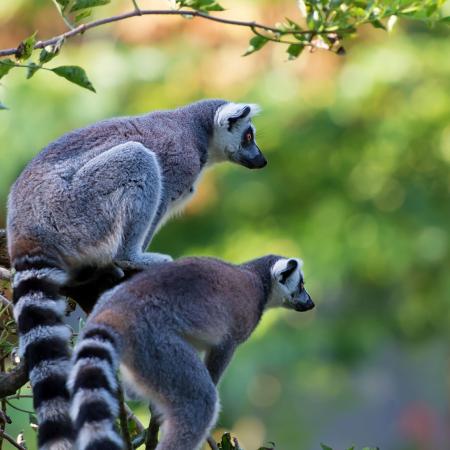- Among a diverse guild of predatory fishes, triggerfish can control the abundance of pencil urchins and thus also the abundance of algae the urchins eat; the experiments showed grazing on algae was eliminated when the pencil urchins were exposed to triggerfish predation, meaning triggerfish are a candidate for protection because of their strong effects on ecosystem function.
- Green urchins eat more algae than pencil urchins yet are not the urchin prey of choice for predatory fish. That suggests those fish aren’t controlling green urchin populations and thus that green-urchin barrens in the Galapagos – areas where the urchins have stripped the sea floor of algae – are not the result of the overfishing of predatory fish.
- Spanish hogfish are not major predators of urchins as earlier, survey-based research had suggested. Hogfish mainly eat the smaller pencil urchins and also interfere with triggerfish feeding on large pencil urchins; the hassling hogfish cause triggerfish to spend more time to eat an urchin and in some cases force a fumble.
- Statistical modeling of predation on pencil urchins indicates that two types of interference behavior – the hogfish harassing the triggerfish, and sea lions and sharks startling the triggerfish – could slow the rate of triggerfish predation on pencil urchins.
Novak noted that historically, ecologists believed complex food webs typical of the tropics were more immune to trophic cascades than the simpler food webs of higher latitudes; the Galapagos straddle the equator.
Studies such as this one now suggest that is not the case, and that the dynamics of complex food webs can be as predictable as simpler ones provided you understand who the relevant players are.
“When the backbone of the system is strong, you can connect the top of the food chain to the bottom despite all of the indirect effects and the complexities of the system,” said Novak.
“It’s important to know individual species identity when you’ve got a suite of consumers,” Novak said. “The hogfish, the triggerfish, they all feed on very similar things, yet one of the two is most important, the one that drove that first link. And an urchin isn’t just an urchin – one was more immune to consumption from triggerfish, the other more susceptible. And one urchin was important for grazing, and another was not.”
Merely lumping species together at trophic levels would have caused researchers to miss a lot of the subtleties that the photographic study uncovered.
“If you just put urchins out and see how quickly they disappear, you can’t attribute that to any given predator,” Novak said. “We were able to identify those species that were responsible for transmitting the cascade.”
Findings were recently published in PLOS One. The National Science Foundation supported this research.





